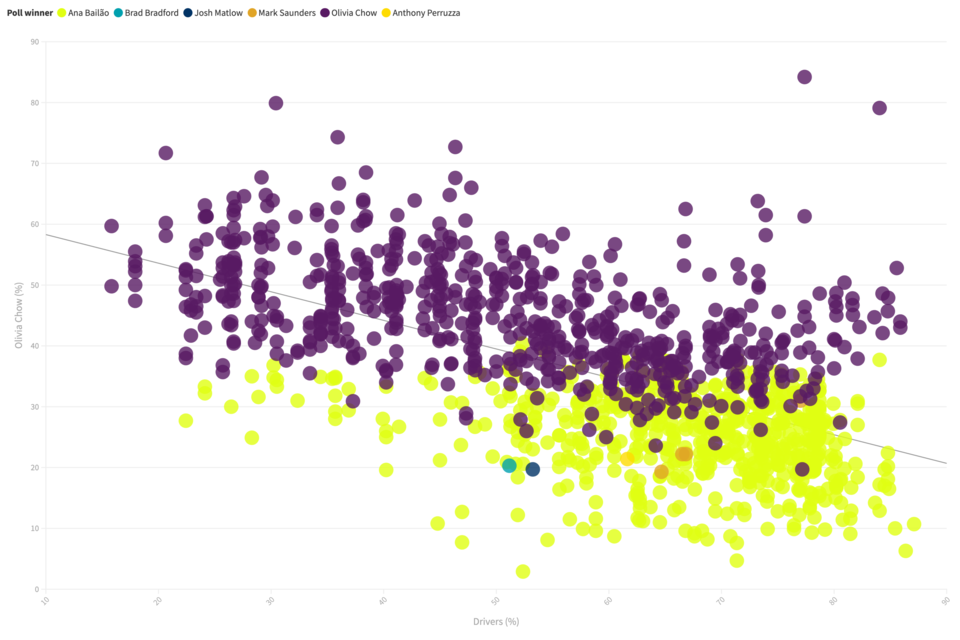Toronto's mayoral election has ushered in a new era: the first left-leaning mayor since 2010.
Olivia Chow won not only in the reliably progressive downtown but also with strong support outside of the core — north Scarborough in particular. To understand her voting coalition, we matched the results of each neighbourhood poll to the demographics in the census tract where it's located to find trends in support for the candidates.
Who won where
In the 2022 election, John Tory won almost everywhere except the downtown core where support for the progressive candidate of the day, Gil Peñalosa, was concentrated. This time, Peñalosa backed Chow, a candidate with far greater name recognition and an appeal that goes beyond the urbanist set.
Tory's successor was Ana Bailão and while she won many of the same neighbourhoods he had, it was by slimmer margins.
You can use the map below to toggle between the top four candidates to see where their support was concentrated.
The income gap
One of the things that sets Chow apart from her predecessor is her success in lower-income neighbourhoods. The scatterplot below shows each neighbourhood and compares its percentage of votes for Chow to the prevalence of households in the neighbourhoods that are considered low-income, based on an after-tax measurement used by Statistics Canada.
The upward-sloping trendline shows her vote was stronger in neighbourhoods with more low-income homes.
Owners and renters
Income is closely related to one of the city's most pressing policy issues: housing. Chow released a housing platform pitched at renters and spoke about how she grew up as a renter in the city, challenging the common wisdom that it's homeowners who decide elections.
Diverse-city
Chow is the megacity's first visible minority mayor, but there was no divide on that basis for voters, lending truth to the motto: "Diversity our strength."
The city's true divide
The same can't be said about the issue that tears the city apart like no other: the car, and the war on it. Voters in neighbourhoods where people commute more by car than the city average went Bailão, while all other modes of transportation, including the TTC, leaned Chow.
Bike-riding 'pinkos'
Speaking of: what Torontonian could forget the day 13 years ago when Rob Ford was sworn in as mayor and Don Cherry marked the occasion with a speech dedicated to "all the pinkos out there that ride bicycles" in Toronto. Well, only a minority of Torontonians tell Statistics Canada that their main mode of transportation to work is a bicycle but where some do, voters generally went Chow.




